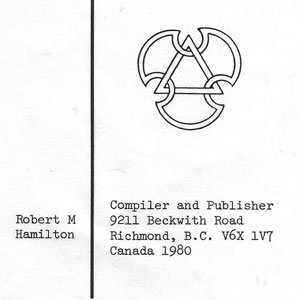
THRIPS: Distinct From Springtails
Ailments Orchid Doctorby Robert M. [Bert] Hamilton (Compiler)
Originally published in The Orchid Doctor in 1980 and 1988
Posted by Sys Admin almost 9 years ago.Article Blog Article Index
Thrips also can be found in compost, they damage the roots at the conjunction of the new growing tip and the developing velamen, an area rich in sugars; control them with Malathion. OR82-256
Share on Social Media:
More The Orchid Doctor Articles under the Heading Thrips
| Thrips | Comments |
|---|---|
| THRIPS: A Common Pest on Vandas Inside the bud, thrips are protected from insecticides, so it is a good idea to spray early; if late use a fine spray or a misting to avoid injury; use Sevin SOW; if flowers are open use Black Leaf 40 which does not damage the flowers. A85-817 | 0 |
| THRIPS: Characteristics and Controls There are both winged and wingless phases; they scrape the surface tissue of plant parts especially flowers, causing shallow, silvery scars; they are fast moving and hard to see; spray with Malathion. A73-715; N328They are a problem only occasionally; sometimes a problem with cymbidiums in bud stage; they can enter the bud sheath and become protected from insecticides; can cause ovipositor punctures of flowers; control with Diazinon, dimethoate, Malathion and Zectran sprays, or Dithio smokes or Temik granules. AH4They are sometimes airborne on strong air currents; are abundant on weeds and vegetation outdoors; control with frequent applications of weak solutions of insecticides, especially on vandaceous plants. F76-33 | 0 |
| THRIPS: Control If Malathion Has Not Been Effective The Malathion used must have been old; use fresh Malathion, spray at 1.5 tpg. every five to seven days, with three applications; or spray with Zectran at 3 tpg. A72-1100 | 0 |
| THRIPS: Controls Spray the young spikes preventively with Sevin 50W (Carbaryl Insecticide) in its wettable powder form; when the flowers open spray with Black Leaf 40 (nicotine sulfate); some growers use Orthene 75 (Soluble powder) at i tpg. F87-87They require persistent effort; control with Malathion, Cygon 2E, Diazinon or a Dithio smoke. A78-909; A64-692; S193; in Florida four types named and five controls given; refer to DK9+ | 0 |
| THRIPS: Controls, in Increasing Degrees of Toxicity to the User Malathion (LD50=2oz.), lindane (1/2 oz.) and dimethoate (1/2 oz.) A68-582 | 0 |
| THRIPS: Insecticide Control for Indoors For a basement collection under lights, use Malathion but if it is not effective, use Diazinon at the rate of 1 tpg.; it may be repeated in 14 days. A81-150 | 0 |
| THRIPS: On Cymbidiums They are among the worst pests, causing spotting on flowers; the damage occurs in the form of halo dots on sepals or petals and appear very similar to Botrytis spotting; use Cygon every six weeks as a pot only drench. A67-499 | 0 |
| THRIPS: On Vandas and Ascocendas Flowers show scarred, burned, or misshapened from the feeding, especially in South Florida; control them by applying wettable powders such as Sevin, or Orthene. F81-153 | 0 |
New Topics
- David George asked question Odom's Fascination - an unusual orchid in category General Discussion
- Carol Holdren asked question Grow Tent in the Garage in category General Discussion
- David George asked question rlc Caotan Beauty found at Home Depot in category Cattleya Alliance
- Kristin Dorris asked question Odontocidium Orchid fungus? in category General Discussion
- Maria Fernandez asked question Wild. Lisa Devos in category Dendrobiums
New Comments
- Carol Holdren commented on topic "rlc Caotan Beauty found at Home Depot " by David George
- Carol Holdren commented on topic "Odom's Fascination - an unusual orchid" by David George
- Dr. Florian Wolf commented on topic "Wild. Lisa Devos" by Maria Fernandez
- Michael Valcarcel commented on member plant Rlc. Chief Takanaka by Walceli Muniz Valverde
- Michael Valcarcel commented on member plant Rlc. Montana Spirit by Michael Valcarcel
- Michael Valcarcel commented on member plant Ctt. Blazing Sun by Michael Valcarcel
- Michael Valcarcel commented on member plant Bc. Spotted Clown by Michael Valcarcel
- Maria Skrypnyk commented on member plant Yamadara Redland Sunset by Maria Skrypnyk
- André Pessina commented on topic "Odontocidium Orchid fungus?" by Kristin Dorris
- Linda Hartman commented on topic "Image of a plant please" by Leshya Perkins
- Paul Reavis commented on orchid Milt. Kismet
- Christiaan Viljoen commented on member plant Psh. fragrans by Christiaan Viljoen
- Christiaan Viljoen commented on member plant Z. maculatum by Christiaan Viljoen
- Christiaan Viljoen commented on member plant C. Gaskell-Pumila 'Azure Star' by Christiaan Viljoen
- Robert H. Findlay commented on member plant Rlc. Joy Sokabe var. Volcano Queen by Sally K
- James Lunsford commented on member plant Lc. Sagarik Wax 'African Beauty AMO/AOS x Blc. Cherry Suisse'Kauai' HCC/AOS var. Cattlyea 'Hybrid ' by James Lunsford
- John Varigos commented on orchid Bulb. schwarzii
- Linda Hartman commented on topic "Issue with Blc. Ben O'Neil "Jubilee" by Glenda Ratliff
- Henry Shaw commented on member plant Ons. Catatante 'Los Roble' by Henry Shaw
- Mary Lane commented on member plant Den. Tianmu Canary by Terre Moore